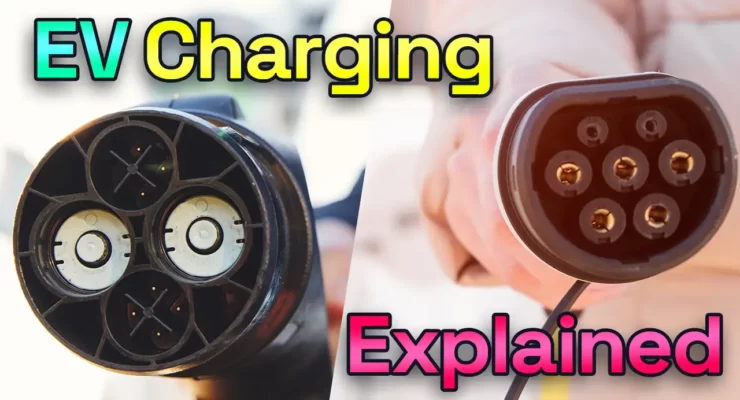Fast read
With rates ranging from 4 to 8 kilometres of capacity added to the battery per hour, Level 1 charging is the slowest type and is best suited for people who do not need a lot of battery power and do not drive the car very far every day. Simple home charging stations frequently have these charging levels.
With a travel capacity added of between 30 to 130 km in one hour of charging, level 2 charging stations are the most often used choice for everyday EV charging. 240V AC is used to give level 2 charging and can produce about 80 amps of power.
Level 3 charging stations, also referred to as DC fast chargers, are the swiftest type of charger and can add significant battery capacity in relatively short periods.
What is the difference between a level 1, 2 and 3 charging station?
A frequently asked question regarding electric vehicles (EVs) is the different types of EV charging level stations and what they mean. The three electric vehicle charging stations differentiate themselves based on the electricity they consume the amount they can discharge and therefore the charging speed.
EV Charging Level 1
This is the slowest form of electric vehicle charging available at a speed of roughly 4-8km travelling distance added to the battery per hour. Level 1 EV charging stations can be installed in homes and at some EV charging stations. The advantage of using a Level 1 EV charger is that it can charge any electric or plug-in hybrid electric vehicle from any standard 240 Volt AC power point.
Level 1 EV charging is highly beneficial for plug-in hybrids. Allowing even Type 1 charging to be sufficient enough to charge a plug-in hybrid battery fully.
For those EV drivers who require large amounts of battery daily, you may need more than level 1 EV charging, as it can take up to 20 hours for a level 1 charger to fully charge an EV battery.

EV Charging Level 2
Like level 1 charging, level 2 EV chargers can be installed at your home and are quite common in public charging stations, such as shopping centres. This is a reasonably significant increase from level 1 charging. Level 2 chargers can fully charge an EV battery at this speed in 4 to 8 hours.
The most popular choice
Level 2 EV charging is provided via 240V AC outlets, producing 7kW to 22kW per hour. The difference depends on the supplied power is single phase, in which case one can charge with 7kW/h or 3 phase, where one can extend the charge power to as much as 22kW/h, being 3 times the single phase amount.
Level 2 charging is the most popular option for daily EV charging. The significant difference in charging speed between levels 1 and 2 means, that the homeowner has two clear options, depending on their daily commute needs.
For a simple city drive every day, you can easily undertake it with a Level 1 EV charger. However, if you have to commute from Sydney to Wollongong, Melbourne to Bendigo, and then to Perth and Bunbury on a daily basis, then you really need Level 2 charging. With Level 2 EV charging, you can recharge the EV completely overnight.
Level 2 chargers deliver around 80 amps of power to provide this speed. You need a supply line from your breaker box and a 100 amp 2-8-240V circuit to supply this amount. This does create an extra cost, as part of the level 2 EV charger installation – so you should weigh up if the extra power is worth it, in your specific situation.

EV Charging Level 3
Also known as DC rapid chargers, level 3 charges are the fastest and are mostly found at public charging stations. They can charge at 5-30km per minute, allowing a fully charged EV battery in as quick as 30 minutes. With a charging rate of 43kW to 100+kW an hour, this is the fastest available charger for an EV.
Unlike EV charging levels 1 and 2 which use AC, level 3 uses DC. Level 3 charging stations use a very high voltage, emphasizing their inapplicability for residential use. In saying this, attaining one for a residential home is possible, if you got the money and the power supply to support it. If you consider getting one, you must ensure that your home has the appropriate high-voltage supply.
What the future may involve
As the technology involved in EVs advances, so does the potential for new ways to charge.
Battery swapping
Battery swapping is another charging alternative that involves automated equipment entirely swapping a depleted battery for a fully charged one at a charging station.
The current batch of EVs lacks this feature in their design, but it’s becoming common in commercial vehicle fleet applications, such as electric delivery vehicles.
Wireless charging
Wireless charging is currently in an early development phase. The idea behind this development is to use inductive charging. Inductive charging involves the transfer of energy between a charging station and the vehicle through an electromagnetic field, removing the need for a plug.
Though not yet available, wireless charging will simplify and expedite the charging process. Imagine the convenience of driving to work, parking in a dedicated spot, and having your battery charge while you park over the “charging pad.”
Road charging
Road charging is the most complex development that would have the biggest impact. This development involves coils being put under the asphalt to transfer energy to your EV while driving. Currently, there are test projects in Italy and America to explore this technology.
Understanding the difference between the current three options of charging level 1, 2, and 3 charging stations will allow you to decide which option is best for you. Consider your driving habits and EV usage before installing one, and always overestimate your need by about 20%.


